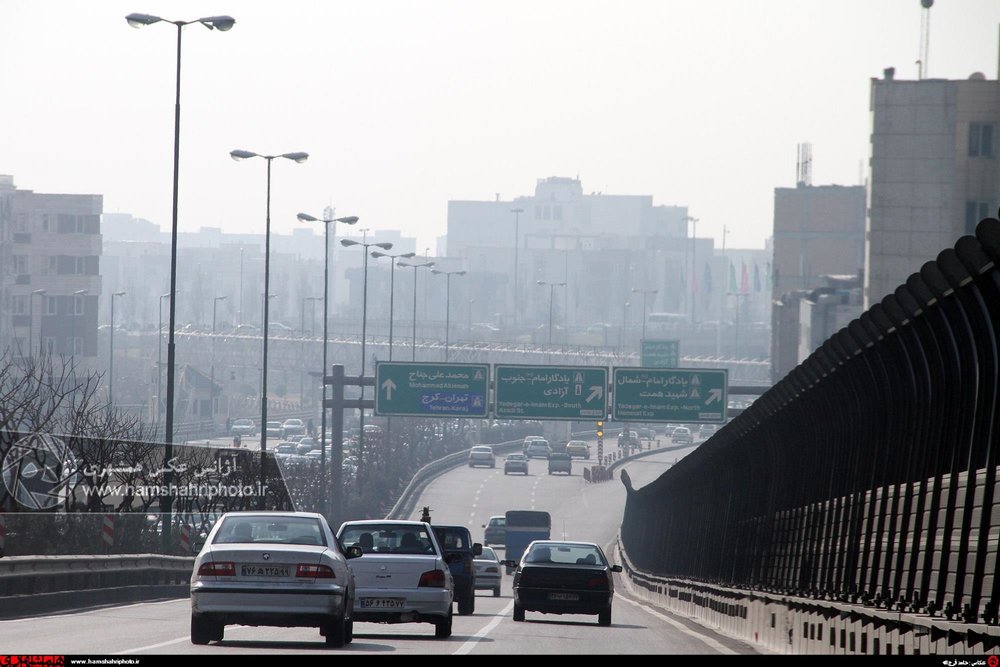Tehran Municipality proposes new plan to tackle air pollution, traffic jam

TEHRAN — Tehran Municipality has prepared a new traffic scheme for the capital in an attempt to address persistent air pollution and traffic congestion in the metropolis, Mehr news agency reported on Saturday.
If Tehran city council approves the proposal the new scheme will go into effect by the beginning of summer.
According to an announcement made by the Tehran transportation and traffic council affiliated to the municipality traffic and transport affairs directorate the newly proposed scheme will replace odd-even traffic scheme in the city.
Odd-even traffic scheme
For many years the city center has been closed to all cars except for a certain number of cars which have permits issued by the municipality as well as public transport means. And the odd-even traffic scheme, as a method of rationing in which access to the streets for private vehicles is granted on alternating days, according to whether the last digit on their license plate is even or odd, was being implemented in zones further from the city center from Saturday to Thursday (Fridays and public holidays excluded).
The aforesaid traffic schemes, aimed to cut the emission generated by the vehicles mostly in traffic-congested areas of the capital especially during the peak periods or during peak pollution events. Except for public transportation, including taxis and buses, the scheme was aimed at capping the number of private passenger cars allowed on streets based on their registration number.
However, all drivers could enter both city center and odd-even traffic zone by paying fixed fees to the Musicality regardless of their plate numbers every day.
Traffic scheme revised
Since the beginning of the current Iranian calendar year (March 21, 2018), however, the payment system for entering the traffic zone in Tehran changed. Drivers are charged depending on the time of the day they are entering the zone (either it is during peak hours or not) and how long they are staying in the zone. The time of traffic scheme also increased from 10 hours a day to more than 12 hours a day from 6.30 a.m. to 7 p.m. Thursdays, Fridays, and public holidays excluded.
Those who lived in traffic zones were also allowed to leave the zone an hour later and enter the zone at 5 p.m.
Furthermore, all vehicles including heavy-duty vehicles are required to pass vehicle inspection and comply with emission standards to release less pollutants in the congested areas or they will face fines.
Those vehicles which pass the emission standards with top score can benefit 20 percent discounts to enter the zones.
Since the beginning of the current year citizens can pay their fees for entering traffic zones via an e-payment service by charging their accounts online.
The newly proposed scheme
And now it is decided to replace odd-even traffic scheme with another scheme which is said to be more effective.
Based on the new scheme all vehicles, regardless of their registration numbers, are allowed to enter the traffic zones 20 days during each season (80 year all year round) for free without paying any fees and those who are planning on entering the zone more should pay taxes to the municipality.
The fees are again calculated depending on the time of the day they are entering the zone and how long they are staying in the area. Also those living in traffic zones will be provided with 50 percent discounts for entering the zone and top scorers in vehicle inspections will be given 25 percent discounts as well.
A need for an efficient plan
So far traffic schemes seem to be ineffective in controlling air pollution.
As per the data released by Iran’s Meteorological Organization with increased precipitation in Tehran air quality have noticeably enhanced in the capital.
While last year in autumn Tehran only received 13.6 millimeters of rain, this year in the same period the amount of rain increased almost 8 folds amounting to 111.5 millimeters.
Consequently, the number of days with good air quality increased from 44 in last autumn to 68 this year and days with clean air quality increased from 3 days to 7 in the same period.
Additionally, the number of slightly polluted days causing discomfort for sensitive groups being 39 days also were cut in more than half this autumn.
While last autumn 4 days were reported as highly polluted, this year not one day did the pollutants hit high levels.
The city may face decreased precipitations for the next year and only an efficient traffic scheme, limiting the presence of cars in highly congested and polluted areas, can curb air pollution.
MQ/MG
